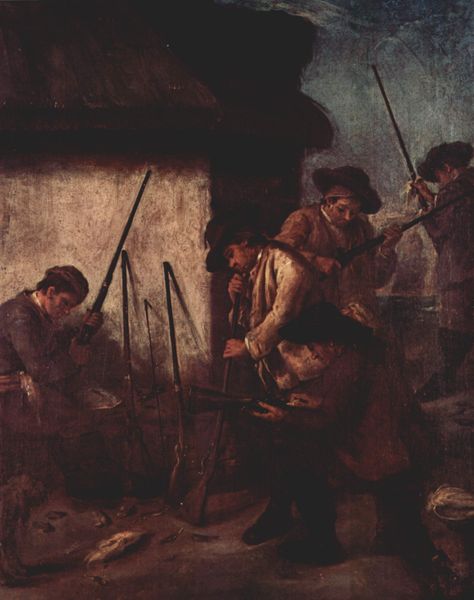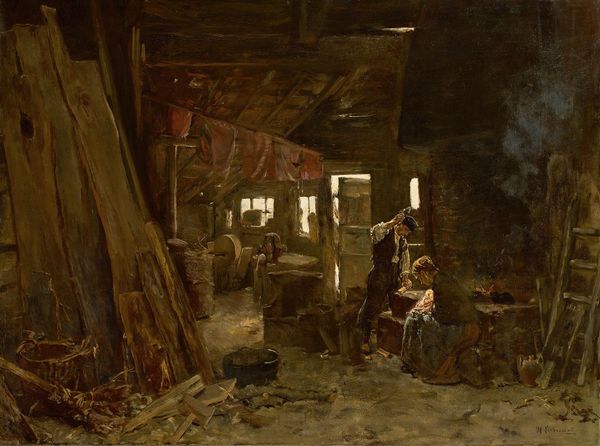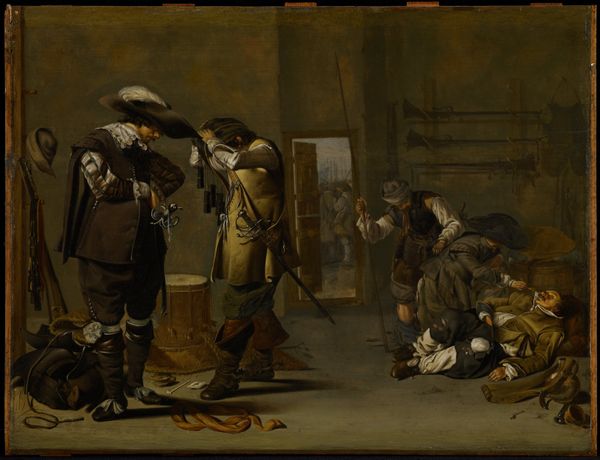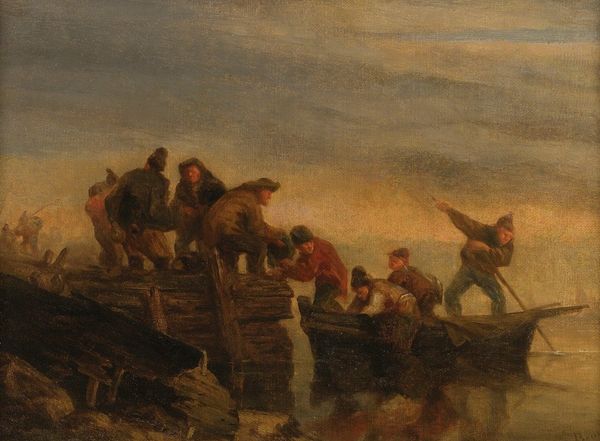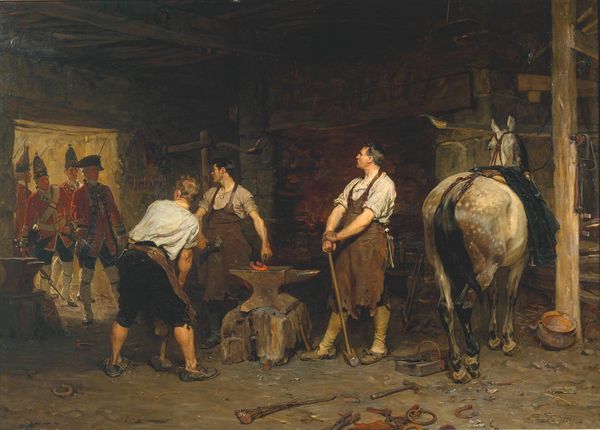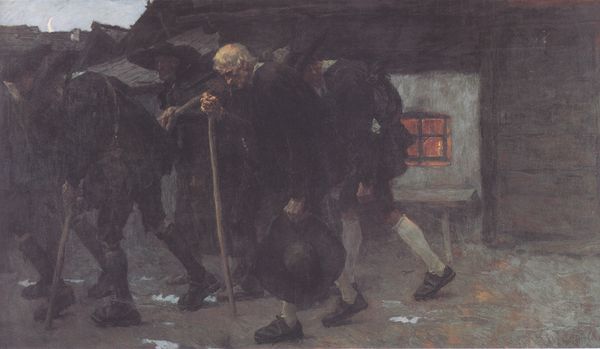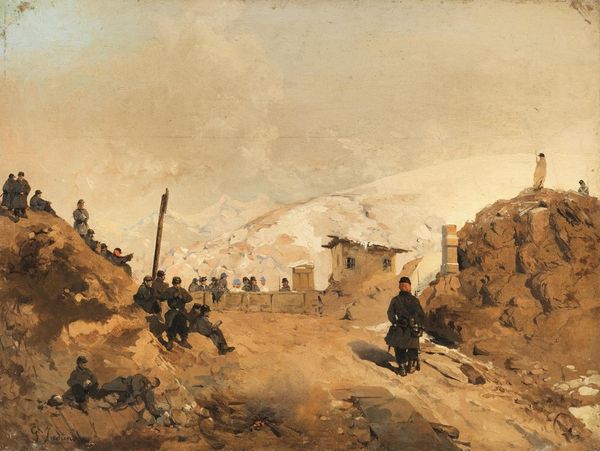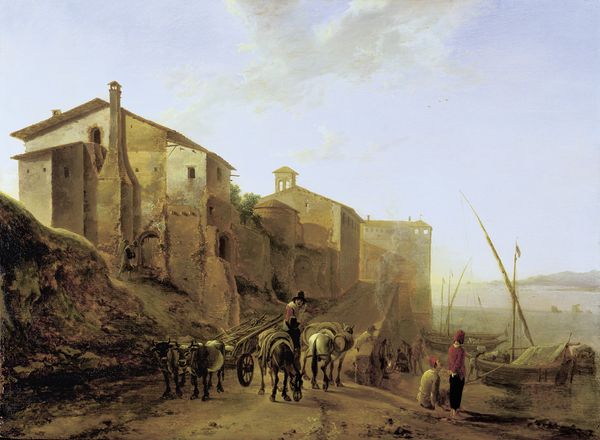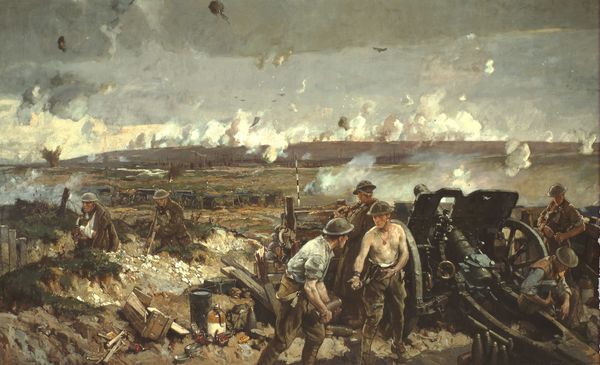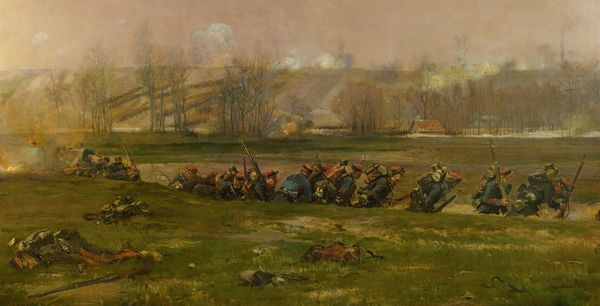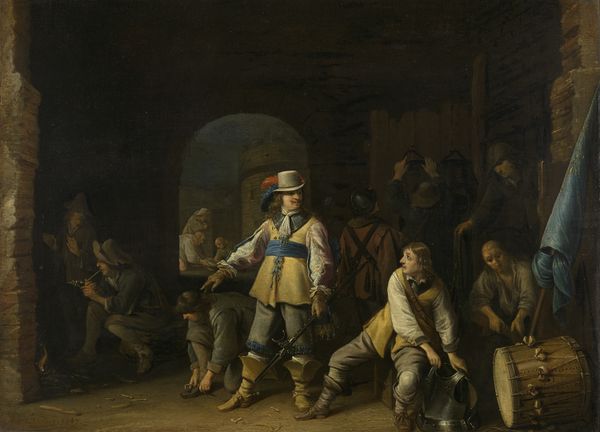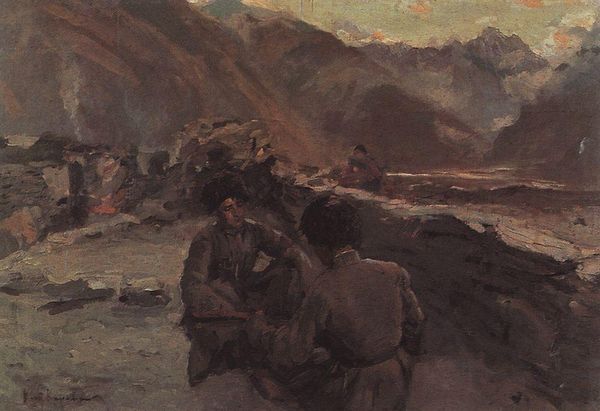
Dimensions: 36 1/2 × 54 1/2 in. (92.7 × 138.4 cm)
Copyright: Public Domain
Editor: Here we have Etienne-Prosper Berne-Bellecour's "Dans la Tranchée," made around 1875 using oil paints. There’s something incredibly gritty about it – the earth tones, the worn uniforms, the weary expressions…it feels less like a heroic depiction of war and more like a study of labor. What stands out to you about this piece? Curator: For me, the key lies in understanding the materiality of the work itself and how it relates to the subject matter. Look at how Berne-Bellecour depicts the trench – the raw, excavated earth, the roughly constructed shelters. The oil paint, thick in places, mimics the density of the mud and dirt, reminding us of the sheer physical labor involved in constructing and inhabiting such spaces. Editor: So, you're focusing on the materials and how they inform the subject? Curator: Precisely. The 'genre painting' aspect leads us to analyze social dynamics depicted through material and lived reality. What kind of labor does this scene imply beyond just fighting? Editor: Right, they're not just soldiers, they’re also digging, building shelters, dealing with…well, the dirt. The everyday grind of war beyond the battlefield. The dog even hints at labor, perhaps in guarding the encampment? Curator: Exactly. Think about the production of military uniforms, weapons, the whole industrial complex of war reflected even in this relatively small, intimate scene. How does that mass-produced aspect contrast with the evident hand-labor displayed within the painting? Editor: It’s like this tension between the industrialized war machine and the individual, lived experience within it. I didn't initially see the broader commentary, focusing instead on the faces, the expressions… Curator: But those expressions are informed by the materiality! Fatigue isn't just a feeling, it’s etched on their faces by physical work, by the damp, the cold… Consider the consumption this scene implies as well – resources depleted by continuous war. This, through art's means of production, becomes a challenge against solely valorizing war. Editor: I see it now! By emphasizing the sheer labor and materiality, the painting offers a powerful anti-war statement by focusing on its human cost. Thank you.
Comments
No comments
Be the first to comment and join the conversation on the ultimate creative platform.
